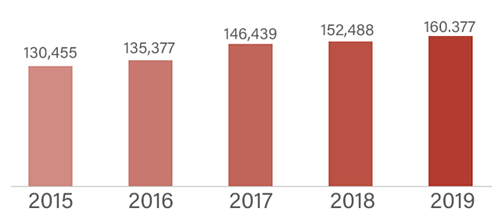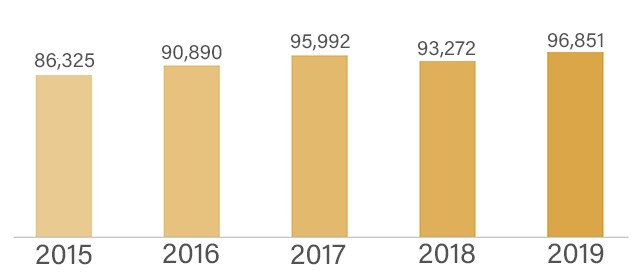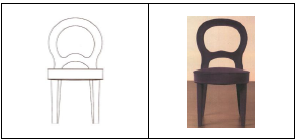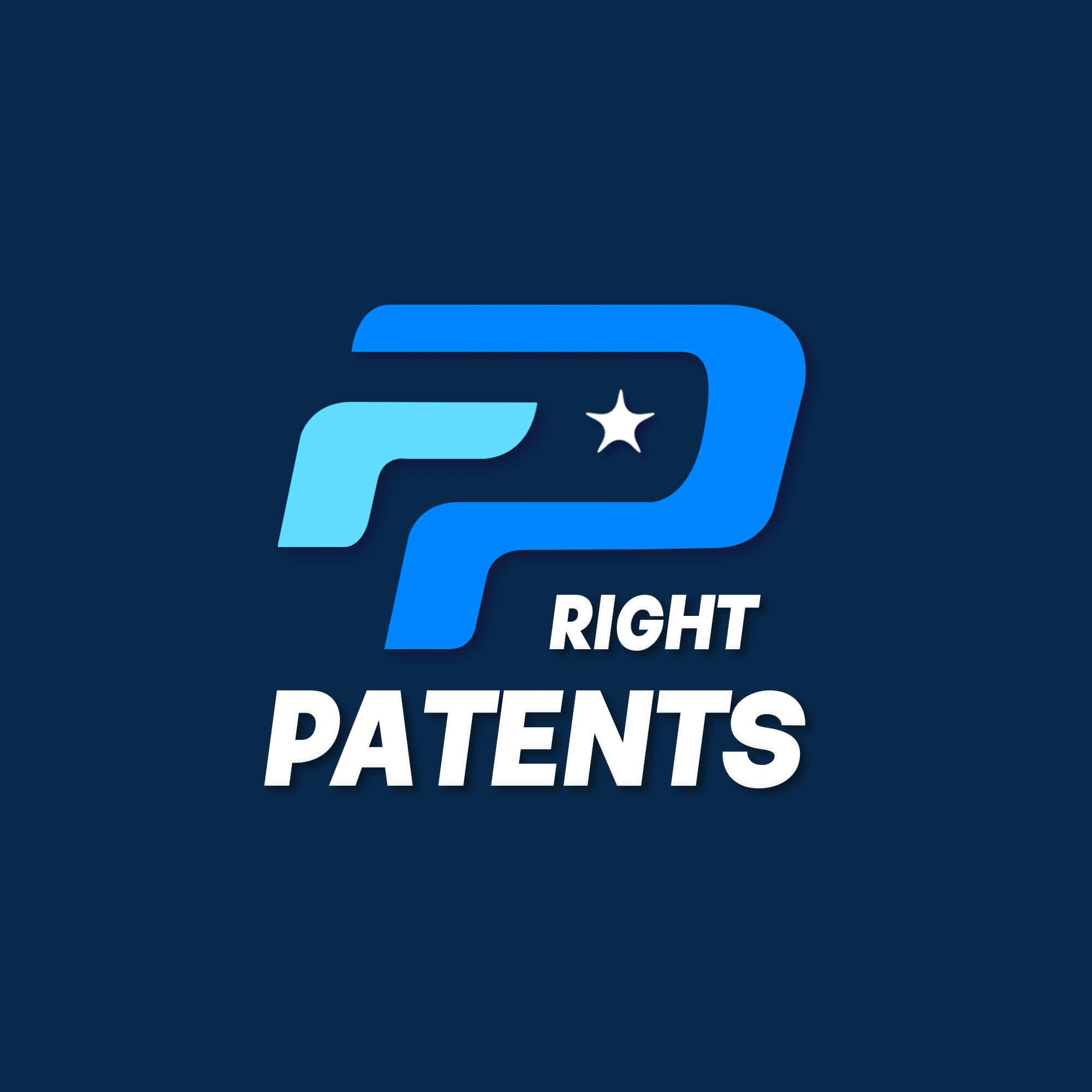The European Union Intellectual Property Office (EUIPO), founded in 1994, has its head office in Alicante, Spain. EUIPO administers protection of EU Trade Mark and Design rights all over the European Union which are complementary to national intellectual property (IP) rights and are linked to international IP systems (EUIPO, 2020). Prior to March 23, 2016, EUIPO was known as OHIM, which provided the exclusive rights for trademark and design protection throughout the European Union (EU) in a very simplified manner using only one application. Today, EUIPO works in collaboration with number of national and regional EU intellectual property offices, the European Commission, the European Parliament, and other international organizations. The European Union Intellectual Property Network (EUIPN) comprising all organizations follow similar process of registration of trademark and design at the national level as well as throughout the EU. Most of the works of registration of trademarks and designs by EUIPO is carried out online, a fully paperless operation. 99% of all trademarks applications have been registered online with more than 75000 users. EUIPO has a strong core team of about 800 professionals.
European Union Intellectual Property Office (EUIPO)
EUPIO works using five languages: English, French, German, Italian and Spanish. Applications for the registration are processed using 23 official languages of the EU. The number of trade- mark-applications over the years have continuously increased. The number of trade- mark-applications in 2015 was 130,455 which increased to 160,377 in 2019 (Fig.1).



Fig. 1: EU trade-mark-applications during the period 2015-2019 updated on 05.06.2020
Source: EUIPO (2017)
The number of Registered-Community-Designs (RCD) has also increased year by year. The number of Registered-Community-Designs (RCD) was 86,325 in 2015 which increased to 96,851 in 2019 (Fig. 2). The EUIPO is a self-supporting organization having all its operations funded through the registration fees.



Fig. 2: EU Registered Community Designs (RCD) applications during the period 2015-2019
updated on 05.06.2020
Source: EUIPO (2017)
EUIPO hosts the European Observatory on Infringements of Intellectual Property Rights. The observatory was handed over to EUIP in June 2012, which brings public and private stakeholders together in controlling piracy and counterfeiting. Also, Read: EUIPO simplifies the registration of design patents in the European Union
European Union Intellectual Property Office EUIPO and Collaborating Partners
EUIPO manages the registration of the EU trade mark and the registered Community design in 28 member state countries of the EU that include Austria, Belgium, Bulgaria, Croatia, Cyprus, Czech Republic, Denmark, Estonia, Finland, France, Germany, Greece, Hungary, Ireland, Italy, Latvia, Lithuania, Luxembourg, Malta, Netherlands, Poland, Portugal, Romania, Slovak Republic, Slovenia, Spain and Sweden. Its users are spread in 200 countries.
EUIPO works in collaboration with several national and regional EU intellectual property offices, the European Commission, the European Parliament, and other international organizations. The European Union Intellectual Property Network (EUIPN) comprising all organizations follows a similar process of registration of trademarks and designs at the national level as well as throughout the EU. Also, Read: Lessons Learnt from Infringement of Design Patent Cases from the United States
The case of United Kingdom
United Kingdom has left the EU with effect from Feb 1, 2020. EU laws will, however, continue to be applicable during the transition period that will end on December 31, 2020, unless extended further with mutual agreement between the EU and the UK. Till the end of the transition period, EU trademark applications and registrations will cover the UK also.
Owners of EU registrations, granted protection during the transition period, will have as a right an equivalent UK registration at no additional cost bearing the same filing/priority/seniority date as the EU registration. Also, Read: Cost of Patents in India: All Types of Patent Fees
Owners of EU applications, still pending at the end of the transition period, will have 9 months to file a request for one with the UKIPO and pay the standard UK trademark application fees. A new UK application with the same filing/priority/seniority date as the EU application will be created, examined, and processed by the UKIPO as a UK application.
Registration of a Community Design
A Community design can be registered in two ways:
- Direct filing with three options to file which includes (i) A direct filing at the office, (ii) Direct filing at the central industrial property office of a member State, and (iii) At the Benelux Office for Intellectual Property (BOIP) in a Benelux country.
- An international registration by filing with the International Bureau of the World Intellectual Property Organization and designating the European Union.
Direct filing process
E-filing, which can be filed at the Office’s web-site (http://equip.europa.eu/ohimportal/en/rcd-apply-now), is the preferred mode of making an application for the registered Community design for two reasons, first to safeguard an accurate quality of design representation and second, the system provides guidance to the applicant. In this way, number of potential deficiencies are reduced and it helps in completing the examination process promptly. There are other alternatives to the e-filing such as using the form provided by the Office. EUIPO has not mandated this form but recommends its use for speedy processing and less errors. An application can also be made by Fax but this mode is not advised due to poor quality of representation of the design in transmission or on receipt in the Office and an expected delay of about one month. EUIPO also provides a facility for sending an application to the Office by ordinary post or private delivery services. Applications are also accepted by personal delivery at the reception office. Also, Read: Government Support for Indian Startup Companies
The elements of the application
The Community Design Implementing Regulations (CDIR) has laid down the following mandatory elements of the application:
- Content of the application
- Indications of the products
- Representation of the design, and
- Fees for the application
Additional requirements apply in the following cases:
- Filing of a multiple application
- If specimens are filed
- If a priority or an exhibition priority is claimed
- If the applicant chooses to be represented. This is specifically applicable to the applicant who are from outside the European Economic Area (EEA).
Time taken in registration
An application for a Community design is registered in less than ten working days if it satisfies all the requirements for registration.
Time in Fast Track
An application that fully complies with the requirements of registration can be registered in two working days, provided following requirements are followed:
- E-filing is used for registration of application
- Indication for the product(s) and its/their classification are made by using the product indication database system.
- Priority documents are enclosed if a priority is claimed.
- Exhibition priority is not claimed
- The representative with identification number in the database, if any, is registered in the Office’s database
- Fees is paid by credit card or debited from a current account.
The filing date
The date of filing an application is the date on which the application is received in the office. The date of sending an application is not the filing date. However, allocation of a filing date requires that the application contains the following:
- A request for the registration of a community design, and
- Applicant’s identification number.
- A representation of the design suitable for reproduction or, where applicable, a specimen.
Payment of fees is not essential for allocation of a filing date.
Representation of the design
The CDIR has specified the following general requirements for the representation of the community design (EUIPO, 2017):
- The design should be represented in a graphic and/or photographic reproduction form, which could be either in black and white or in color.
- The design must be reproduced on a neutral background and must not be retouched with ink or correcting fluid.
- The design representation quality should show all the details of the matter for which protection is requested for.
- The drawing or photograph should permit reduction or enlargement to a size not more than 8 cm by 16 cm per view for entry in the Register for Community Designs and for publication in Community Design Bulletin.
- Drawings, photographs (except slides), computer-made representations or any other graphical representations are accepted, provided they are suitable for reproduction. 3D computer-animated design generating motion simulation are only considered as an additional technical means of viewing the design and does not replace conventional static views. CD-ROMs and other data carriers are not accepted. Also, Read: Which is better, a utility patent or a design patent?
Additional requirements regarding the representation of the design
EUIPO (2017) detailed out the instructions that apply to all designs whatever may be the manner of filing the application, for example, a specimen is attached with the application. Following instructions must be followed in each case:
- Number of views
A maximum of seven different views can be filed to represent the design. The views may be plan, elevation, side view, cross sectional view. Only one copy of each view should be filed, which needs to be numbered by Arabic numerals separated by a dot, the first being the number of drawing and the second being the number of the view.
- Format to be used
A design should be represented using only one visual format, either a drawing or a photograph.
- Consistency of the views
In case of use of different visual formats, each must relate to the same design and should be consistent in comparing the features disclosed. Fig. 3 shows a chair design, the seat is flat in the drawing but ached in the photograph. The backrests are also of different shapes. Such representation is not complying the laid down directions. Also, Read: How to File a Design Patent On Your Own in US
- Visual disclaimers to exclude features from protection
Disclaiming any exclusive right to one or more features disclosed in the views can be done by:
- Excluding with broken lines, blurring or color shading the features of the design for which protection is not sought, or



Fig. 3: Design of chair in the drawing and in the photograph is different
Source: EUIPO (2017)
- Including the features of the design within a boundary, for which protection is not sought. Whatever falls outside the boundary is not included in the protection sought for.
v Explanatory text, wording, or symbols
No explanatory text, wording or symbols should be used in the drawings or photos except the word ‘top’ or the name of applicant or his address.
Additional elements of an application
Mandatory requirements
The following are the mandatory requirements of the application for registration of the community design:
- Identify the applicant and its representative properly with name, address, nationality, and the State in which the applicant is domiciled. In case an identification number is given by the Office, it is sufficient to indicate the identification number and the name of the applicant.
- Specify two languages of the application. The language of the contents supplied by the applicant is the first language and the second language would be one of the Office languages, that is, English (EN), French (FR), German (DE), or Spanish (ES). The second language must be different than the language of filing.
- Indicate the products in which the design is intended to be incorporated or to which it is intended to be applied. Each product should be classified in only one class of the Locarno Classification. Locarno classification is an international classification for industrial designs. Also, Read: Why are patent drawings different from other illustrations?
Optional elements of an application
An application may contain several optional elements such as:
- A priority or exhibition priority claim.
- A description.
- An indication of the Locarno Classification of the products contained in the application.
- The citation of the designer(s).
- A request for deferment.
Payment of Fees
Community design applications attracts payment of different fees to be paid by the applicant at the time of filing. The fees to be paid is under the heads registration fees, publication fees and deferment fees. In case of multiple applications, additional registration, publication, or deferment fees is to be paid for each additional design. If the fees is not paid the time filing the application, late fees is to be paid. If the applicant requests for deferment at the time of filing, he can choose to pay the registration fees and deferment fees plus the publication fees. Fees is to be paid only in euro. Other currencies are not accepted.
Schedule of fees
The schedule of payment of fees under different heads such as registration fees, publication fees, deferment fees and fees for multiple application are given below.
Publication fees
Publication fees depends upon the number of designs in three slabs: the first and the single design, second to tenth design and more than ten designs. Details are presented in Table 1.
Table 1: Publication fees
| Slab | Slab Description | Fees in euro |
| Slab 1 | Single design or first design to be published in a multiple application | €120 |
| Slab 2 | 2nd to 10th design to be published in a multiple application | €60 per design |
| Slab 3 | 11th+ design to be published in a multiple application | €30 per design |
Deferment Fees (If deferment of publication is requested)
Like the publication fees, deferment fees depends upon the number of designs. Three slabs are used for the deferment fees (Table 2).
Table 2: Deferment Fees
| Slab | Slab Description | Fees in euro |
| Slab 1 | Single design or first design with deferment of publication in a multiple application | €40 |
| Slab 2 | 2nd to 10th design with deferment of publication in a multiple application | €20 per design |
| Slab 3 | 11th+ design with deferment of publication in a multiple application | €10 per design |
Refund of fees
Fees paid is refundable, if the applicant withdraws the application or the application is refused without a filling date having been granted. The fees is also refunded if the applicant has deposited less fee to cover the registration.
International registration of application for design
International registration of applications to protect the design in a number of States and/or intergovernmental organizations, such as the European Union or the African Intellectual Property Organization are governed by the Hague Agreement. Under the Hague Agreement, a single international application is filed with the International Bureau. A single international application removes the need for filing series of applications to be filed with different national intellectual property offices or intergovernmental organizations. International registrations designating the European Union are governed by the Geneva Act(1999). Regulations under the Geneva act differs from those to “direct filings” of Community designs with the Office or via the central industrial property office of a Member State or in Benelux Office for Intellectual Property (BOIP). The differences may be entitlement to file an international application, the contents of the application, fees, deferment of publication, the number of designs that may be included in the multiple application, representation before the International Bureau and the use languages.
The period of deferment of publication of an international application designating the European Union is 30 months from the filing date or, where a priority date is claimed, the priority date, unless the holder submits a request for earlier publication to the International Bureau. Also, Read: How much does a design patent application cost in Mexico?
Fees for an international application
For an international application designating the European Union, the applicant has to par a basic fees, a publication fee, and an individual designation fee, that is EUR 62 per design, converted to Swiss francs.
Summary
EUIPO administers protection of trademarks and design rights all over the European Union with 28 States. It provides exclusive rights for trademarks and design protection. The registration for trademark and community design is quite easy and simplified by filing only one application for getting protection in as many State as required by the applicant. EUIPO works using five languages: English, German, Italian and Spanish. Application for registration are processed in 23 official languages of the EU. Although UK has separated out from EU, the EU Laws will continue in the UK till December 31, 2020 when the transition period is over. Applications for community design can be done through e-filing without any paperwork. If all the direction are complied with, EUIPO provides the registration in less than ten working days. Time in fast track is only 2 working days. The design can be represented in graphics and/or photographs. Up to seven views can be attached with the application. Registration fee, publication fee and deferment fee, as may apply, should be paid at the time of filing the application. International registration can be done by a single application filed with International Bureau.
If you want to get help from us who are experts in doing design patent drawing at affordable cost say USD 35 to USD 55 depending on complexity, please contact us by filling below contact form.
Reference
EUIPO.2017. Guidelines for examination of Registered Community design. A publication of EUIPO, Spain. 1-82.
EU.2020. European Union Intellectual Property Office (EUIPO)
